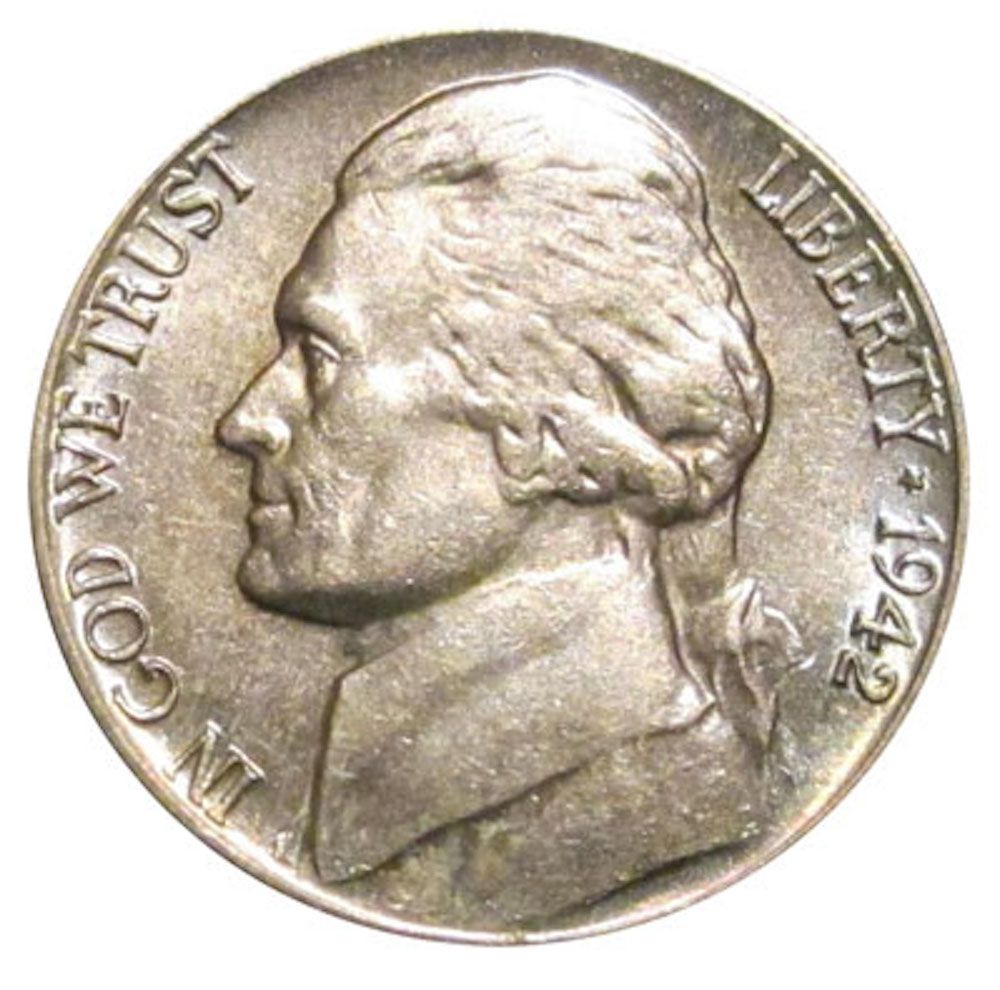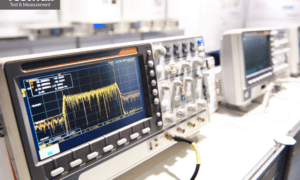The 1942 nickel is one of the most popular and widely collected coins in American numismatics. Nickels minted in 1942 have gained significant value and interest among coin collectors and investors over the years. This article will provide an in-depth overview on the history, rarity, and value of 1942 nickel coins.
Background on the 1942 Nickel Coins
The composition of the American 5-cent coin was changed in 1942 due to wartime metal shortages. Nickels minted from 1866 to 1942 were made of a copper-nickel alloy consisting of 75% copper and 25% nickel. However, in 1942 the United States Mint began producing nickels made of 56% copper, 35% silver, and 9% manganese as nickel was critically needed in the war effort.
These silver alloy nickels were produced through 1945 and are referred to as wartime nickels or 35% silver nickels. They are distinguishable by a large mint mark above the dome of Monticello on the reverse of the coin. The mint marks indicate the branch mint where the coins were struck – P for Philadelphia, D for Denver, and S for San Francisco.
1942 Nickel Coins Key Dates and Rarity
While most 1942 nickels are common, there are a few key dates and varieties that are scarce and valuable to collectors:
1942-P Nickel Coins Value
The Philadelphia mint struck over 196 million regular issue 1942 nickels without a mint mark. High grade uncirculated examples can sell for $8-10.
1942/1 Overdate Nickel Coins Value
This rare overdated valuable nickel variety shows part of an underlying ‘1’ from the previous date. Only a few proof specimens are known to exist, valued upwards of $50,000 in mint state.
1942-D Nickel Coins Value
The Denver mint struck over 106 million nickels in 1942. Mint state coins trade for $8-12 based on condition.
1942-S Nickel Coins Value
The San Francisco mint had the lowest output in 1942, striking just over 31 million nickels. This issue trades for $10-15 in uncirculated grades.
1942 Nickel Coins Circulation Strikes vs Proofs
Most 1942 nickels fall into the category of circulation strikes, meaning they were intended for general public use and have wear from being spent. Proofs were specially struck for collectors with mirrored surfaces and more detail. They were sold as part of annual proof sets.
Proof 1942 nickels are scarce and trade for significantly more than worn, circulated examples. Only a few thousand proof sets were sold in 1942, making these coins highly desirable to numismatists. Proof 1942 nickels can easily fetch $150-300 depending on grade and eye appeal.
1942 Nickel Coins Grading Condition
The value of any 1942 nickel is heavily dependent on its grade and condition. Some of the main grading scales used for coins include:
- About Uncirculated (AU) – Light wear on the highest spots but most details are sharp
- Uncirculated (MS/Mint State) – No wear, ranging from MS60 up to a flawless MS70
- Proof – Mirror-like surfaces with frosted design elements
Coins that grade MS63 or higher are considered choice uncirculated and command the highest premiums. Proof specimens exhibit deep mirror fields and frosted devices in perfect condition.
Current 1942 Nickel Values
Here is a quick reference on the value of 1942 nickels based on the Mint State (MS) grade:
- MS-60: $8 – $10
- MS-63: $12 – $15
- MS-65: $25 – $35
- MS-67: $100 – $150
In lower About Uncirculated grades, common date Philadelphia, Denver, and San Francisco issues trade for $3 to $5. Well-worn circulated examples are worth the face value of coins. However, high grade specimens certified by PCGS or NGC can sell for much more.
As mentioned above, proofs and rare valuable nickel varieties such as overdates are worth far more than these listed amounts. The 1942/1 overdate is valued at around $50,000 for proof examples based on the limited population reports from grading services.
Factors Affecting Value of 1942 Nickel Coins
When determining the value of a 1942 nickel there are some important factors to consider:
- Mint mark – Branch mint coins (1942-D and 1942-S) are worth more than Philadelphia issues.
- Condition – Grading is critical. A small difference in condition can mean a big difference in price.
- Strike – Well struck coins with sharp details are preferred over weak, indistinct strikes.
- Eye appeal – The overall attractiveness of the coin and luster affects market value.
- Varieties/Errors – Rare overdates, doubled dies, and mint errors command huge premiums.
Coins authenticated and graded by NGC or PCGS tend to sell for more than raw uncertified examples. Population reports from the grading services verify the rarity and survival rates for coins like the 1942/1 overdate.
1942 Nickel Coins Demand and Future Outlook
As one of the classic 20th century wartime coinage issues, the 1942 nickel has long enjoyed strong collector demand. Many numismatists assemble complete date and mint mark sets of Jefferson nickels that include the silver alloy wartime nickels of 1942-1945. The popularity of these sets has increased steadily over the decades.
With limited quantities available of nice uncirculated and proof examples, prices are likely to continue trending upward in the coming years. Greater scarcity due to melting and loss over time also make surviving 1942 nickels more valuable. Both collectors and investors recognize the historical significance and inherent value of these coins.
Overall, the 1942 nickel stands as an important and widely collected U.S. coin issue that covers an interesting period in American history. This mintage marked a turning point that saw the removal of nickel from the 5-cent coin alloy for strategic purposes during World War II. For these reasons, the 1942 nickel will remain prized by numismatists and carry a strong premium in all mint state grades for the foreseeable future.
How to Buy 1942 Nickel Coins
Here are some tips on how to buy 1942 nickels in today’s coin market:
- Certified Coins – For the best value and authenticity, purchase uncertified coins graded and encapsulated by NGC or PCGS. The plastic holder ensures the coin’s condition is preserved.
- Coin Shops – Many local dealers will have a selection of 1942 nickels, some raw and uncertified along with certified coins. This allows you to personally inspect the coins.
- Coin Shows – Large coin shows often have an extensive inventory of 1942 nickels to choose from. You can comparison shop different dealers and grades.
- Online Retailers – Reputable online coin stores like APMEX, David Lawrence Rare Coins, and GreatCollections offer 1942 nickels certified by grading services. Purchases are guaranteed by the retailer.
- Auctions – 1942 nickels are regularly sold through major auction houses like Heritage Auctions and Stack’s Bowers. You can bid on coins slabbed by NGC or PCGS.
When buying any older or key date coins online or by mail, third-party certification is strongly recommended to verify authenticity and condition.
Storing and Handling 1942 Nickel Coins
Since silver alloy 1942 nickels are prone to toning and discoloration over time, proper storage and handling is important for preservation:
- Use coin sleeves or envelopes made of inert soft plastic when storing uncirculated nickels. Prevent direct contact with other coins.
- For circulated examples, organize and store in 2×2 cardboard coin holders. Use these to also hold your nickels in albums or storage boxes.
- Always handle coins by the edges to avoid fingerprints on the surfaces. Use cotton gloves if necessary.
- Do not clean coins as this will remove the toning and negatively impact the value.
- For long term storage, place nickels in an air-tite capsule or acrylic coin holder to prevent wear and environmental damage.
By taking care with proper storage, 1942 nickels can be preserved in the same pristine condition as the day they were minted more than 80 years ago.
Frequently Asked Questions
- What is special about the 1942 nickel?
The 1942 nickel is special because it was the first year that the mint composition was changed from copper-nickel to silver alloys. This was done to preserve nickel for wartime industrial use during World War II.
- How can I tell if I have a silver war nickel from 1942-1945?
Wartime silver nickels can be identified by the large mint mark appearing above the dome of Monticello on the coin’s reverse. They will have a mint mark of P, D, or S signifying which U.S. mint struck the coins – Philadelphia, Denver or San Francisco.
- What are some key dates and varieties for 1942 nickels?
Some key coins for the 1942 nickel series include the rare 1942/1 overdate, the lower mintage 1942-S, and any coin graded MS65 or higher. Proofs and coins with full steps on the reverse carry significant premiums.
- What mintmark is most valuable on 1942 nickels?
Generally the lowest mintage 1942-S nickel is the most valuable. However, condition rarity matters more than mintage. A very scarce MS67 1942-P or 1942-D may trade for much higher values than a lower grade 1942-S.
- How much are 1942 nickels worth?
Most common 1942 nickels in circulated condition are worth $1 to $5. Mint state coins range from $8 up to $100 or more based on grade, while proofs can be worth $150-$300. The rare 1942/1 overdate variety sells for around $50,000 in prime condition.
So in summary, 1942 was an important transitional year for the wartime nickel series. These coins enjoy strong collector demand due to their historic significance, low mintages, and precious metal content. With the key dates and mint marks in certified uncirculated condition, 1942 nickels represent an excellent opportunity for numismatists and investors alike.





























